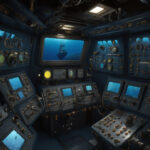Microplastics are a pervasive environmental issue. Defined as plastic particles smaller than 5mm in diameter, these tiny fragments originate either from direct production, such as plastic beads in personal care products, or from the degradation of larger plastic items like bottles, fishing nets, and synthetic textiles. The latter is the predominant contributor to microplastic pollution, a consequence of the rampant plastic consumption over the last 70 years.
Historically, plastics gained traction in the 20th century due to their lightweight nature, low cost, and durability. While these attributes make plastics advantageous during their intended use, they turn into a significant problem once they are discarded. Inadequate waste management has led to an exponential increase in both macro and microplastics entering the environment. Today, microplastics are ubiquitous, contaminating rivers, oceans, and even remote locations like the Arctic.
Recent studies have alarmingly revealed that the concentration of microplastics in Arctic sea ice is notably higher than in the surface waters of the Arctic Ocean. This insight was first documented in the early 2000s and has been substantiated by subsequent sampling efforts across various locations and timeframes. The implications of this phenomenon are vast and warrant careful consideration.
To better understand the potential consequences of microplastics in Arctic sea ice, one must consider their dual roles. First, sea ice acts as a reservoir for microplastics, storing and redistributing these pollutants within the marine environment. In recent decades, as the extent of Arctic sea ice cover has diminished, this dynamic has evolved. Less ice means more direct interaction between the ocean and the atmosphere, potentially altering the global distribution of microplastics.
Second, the darker color of microplastics compared to the reflective surfaces of sea ice might influence the absorption of solar radiation, leading to variations in melting rates. Increased melting not only affects the Arctic climate system but also has ramifications for under-ice ecosystems that depend on light penetration. Phytoplankton, for example, rely on sunlight for photosynthesis and any obstruction in this process due to changes in light availability could have a cascading effect on marine food webs.
The reasons for the elevated microplastic concentrations in Arctic sea ice remain ambiguous. One possibility suggests that higher levels could correlate with increased microplastic runoff from rivers entering the shallow shelf seas of the Arctic Ocean. These rivers may transport significant quantities of microplastics, which then interact with the forming sea ice.
Alternatively, the unique process of ice formation could significantly contribute to the concentration of microplastics within the ice. During the formation of sea ice, ice crystals can upwardly draw water and impurities such as sediments and microplastics, resulting in increased concentrations within the solidified ice. Microbial mucus, made up of a complex network of polymers, can also play a role, creating a medium that traps and collects microplastics. Both of these mechanisms suggest a direct link between the growth of sea ice and the concentration of microplastics.
Adding complexity to this scenario is the question of when microplastics are released from the ice as it melts. This release is crucial, as it determines the microplastic load in the underlying waters. Understanding the timing and conditions conducive to their release is fundamental for comprehending the broader impact of microplastics on ocean ecosystems.
To explore these unknowns further, a research project on the sea ice-ocean exchange of Arctic microplastics has secured funding from the Arctic System Science Program at the US National Science Foundation (NSF). This initiative employs advanced 1D and 3D numerical modelling alongside experimental laboratory work to gain insights into the mechanisms of microplastic incorporation and release relative to sea ice dynamics.
Collaborative efforts are vital for tackling this multifaceted problem, which includes scientists from the University of Washington Applied Physics Laboratory, the Institute for Systems Biology, the Woods Hole Oceanographic Institution, the National Center for Atmospheric Research, and the University of Colorado Boulder. By pooling expertise across disciplines, researchers aim to uncover the causes of elevated microplastic concentrations in Arctic sea ice while also analyzing the broader implications for marine systems in a changing climate.
An essential aspect of this project involves evaluating whether microplastics can affect the radiative properties of sea ice. If significant enough, these changes could feedback into the climate system, bridging the often separate discussions surrounding microplastic pollution and anthropogenic climate change.
As the project progresses, initial results are starting to emerge, promising to shed light on some of the pressing questions about microplastics in the Arctic environment. Further findings will be shared in upcoming publications, marking a vital step towards understanding and addressing the growing threat of microplastic pollution in one of the planet’s most fragile ecosystems.











